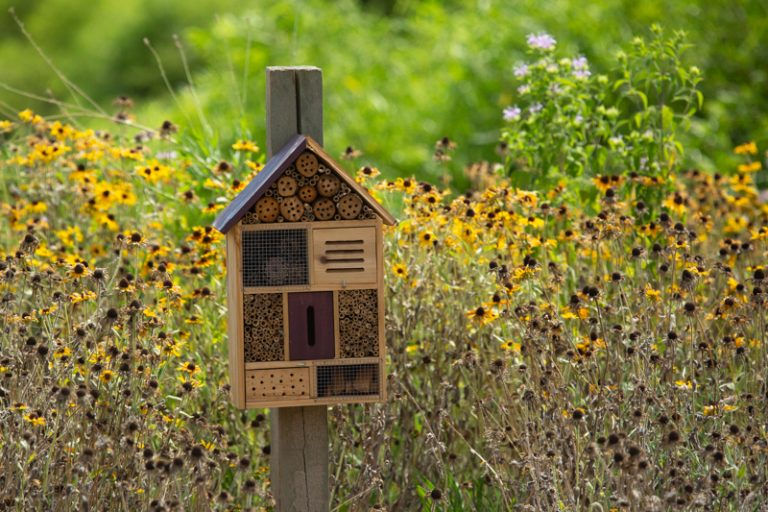10 Key Plants for Your Pollination Garden
- David Burrows

- Aug 26, 2023
- 3 min read
Here at Arkearth, we’re all about promoting biodiversity and supporting bees, butterflies, bats, and all pollinators through our Pollination Accelerators, because they are essential for sustaining a healthy ecosystem. Our Wildflower Campaign has helped send millions of seeds into all 50 states. So, we researched the best plants that help feed pollinators. Here are just some of the top wildflowers and herbs that serve as excellent sources of food for our vital flying friends.

Lavender (Lavandula spp.): Known for its fragrant blooms, lavender is a favorite among bees and butterflies. Its nectar-rich flowers provide sustenance while also contributing to the production of high-quality honey. Thrives in dry hot conditions and in USDA zones 5 to 9. You can also use Lavender in many different skincare treatments and foods.

Borage (Borago officinalis): Borage, with its striking blue flowers, is a magnet for bees. Its nectar-rich blossoms are especially appealing to honeybees and bumblebees. Borage is not only beneficial for pollinators but also for gardeners, as its edible flowers can be used to garnish salads and desserts. Native to the Mediterranean, can be found throughout Europe and the U.S.

Sunflowers (Helianthus spp.): Sunflowers are not only visually appealing but also excellent food sources for a variety of pollinators. Their large, open flowers make it easy for bees and butterflies to access nectar and pollen. Grown throughout North America with full sun and in soils of 6.0 to 6.8 pH. Order Sunflowers from Arkearth and support our projects! :)

Bee Balm (Monarda spp.): Also known as wild bergamot, bee balm attracts both hummingbirds and bees with its vibrant and aromatic flowers. Its tubular blossoms are particularly well-suited for the long bills of hummingbirds. Does best in USDA zones 4 to 9. Fun Facts: When used in teas, it can help with digestive issues, bloating, sore throats, and nausea. When applied topically, it can help with bee stings, rashes, and minor wounds

Echinacea (Echinacea spp.): Commonly known as coneflowers, Echinacea plants produce beautiful daisy-like flowers that are highly attractive to bees and butterflies. Their nectar-rich centers provide essential nourishment. Found throughout eastern and central North America.

Wild Lupine (Lupinus spp.): Wild lupine is not only a stunning addition to natural landscapes but also an important food source for various pollinators, including bumblebees. It's also a host plant for the larvae of certain butterfly species. Native to North America. Fun Facts: Most plants grow to a height of 1 to 5 feet tall, but some can grow to 20 feet tall. The flowers bloom in the late spring or early summer.

Mint (Mentha spp.): Mint plants, such as spearmint and peppermint, produce clusters of small flowers that pollinators adore. Bees and other insects are drawn to the mint's abundant nectar. Mint is found all around the globe, but the United States produces over 70% of the world’s crops. Used in teas and Asian foods.

Thyme (Thymus spp.): Thyme's delicate flowers are rich in nectar and highly attractive to bees. This herb is not only a culinary delight but also a valuable addition to pollinator-friendly gardens. Grows best in USDA zones 5 through 9. The word "thyme" may come from the Greek word "thymus", which means "courage" or "perfume".

Oregano (Origanum spp.): produces small clusters of flowers that provide a reliable nectar source for pollinators. Letting some of your oregano plants flower benefits local pollinator populations. It’s native to the Mediterranean but found throughout the U.S. Oregano is a good source of iron, manganese, vitamin K, fiber, calcium, and omega-3 fatty acids.

Goldenrod (Solidago spp.): Often wrongly blamed for causing allergies (which is usually the result of wind-borne pollen from other plants like ragweed), goldenrod is a fantastic late-season nectar source for pollinators, including butterflies and bees. It’s a hardy plant found around the world and is the state wildflower of South Carolina.
When creating a pollinator garden, it's important to incorporate a variety of these wildflowers and herbs to ensure a consistent food supply throughout the growing season (Spring, Summer, and Fall). Additionally, avoiding the use of pesticides and including shelter (like insect hotels) through native vegetation and appropriate nesting sites further enhances the overall habitat for pollinators. By nurturing these plants, you can contribute to the well-being of pollinators and the broader ecosystem.
Consider contributing to Arkearth! Every donation goes to advancing our mission to deploy more Pollination Accelerators and every donation is tax-deductible!



Comments